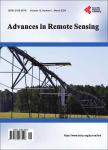Evaluating Biomass of Juniper Trees (Juniperus pinchotii) from Imagery-Derived Canopy Area Using the Support Vector Machine Classifier
Evaluating Biomass of Juniper Trees (Juniperus pinchotii) from Imagery-Derived Canopy Area Using the Support Vector Machine Classifier作者机构:Texas A&M AgriLife Research (TAMAR) Vernon USA
出 版 物:《Advances in Remote Sensing》 (遥感技术进展(英文))
年 卷 期:2013年第2卷第2期
页 面:181-192页
学科分类:1002[医学-临床医学] 100214[医学-肿瘤学] 10[医学]
主 题:Remote Sensing Geospatial Imagery Biomass Juniperus pinchoti Rangeland Bioenergy Terrestrial Carbon Budget
摘 要:Both temporal and spatial magnitude, structure, and distribution of rangeland aboveground biomass (AGB) are important inputs for many necessities, in particular for estimating terrestrial carbon amount, ecosystem productivity, climate change studies, and potential bioenergy uses. Much of the remote sensing research previously completed has focused on determining carbon stocks in forested ecosystems with little attention directed to estimate AGB amount in rangelands. Our objectives were to: 1) identify and delineate individual redberry juniper (Juniperus pinchotii) plants from surrounding live vegetation using the support vector machine method for classifying two-dimensional (2D) geospatial imagery with a 1-m spatial resolution at two sites;and 2) develop regression models relating imagery-derived and fieldmeasured single tree canopy area and diameter for dry AGB estimation. The regression results show that there were very close and significant relationships between field measured juniper plant AGB and canopy area derived from the image classification with r2 0.90. These results suggest that spectral reflectance recorded on 2D high resolution imagery is capable to assess and quantify AGB as a quick, repeatable, and unbiased method over large land areas.



